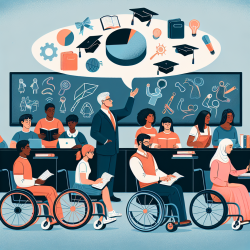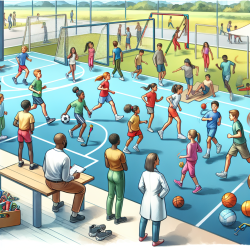Introduction
Empowerment is a critical component in the development of students with disabilities, particularly during transitional phases. The research article "Empowering Students in Transition" explores the impact of a physical activity program on the empowerment of students with disabilities. This blog aims to provide practitioners with insights from the study to enhance their skills and encourage further research in this vital area.
Understanding Empowerment Theory
Empowerment theory focuses on increasing personal power, self-confidence, and self-determination. It is essential for individuals, especially those with disabilities, to feel empowered to make their own decisions and improve their quality of life. The study utilized empowerment theory to assess how students' attitudes changed while participating in a workout buddy program with same-age college peers.
Key Findings from the Research
The study revealed several positive effects of the intervention, including:
- Increased sense of empowerment among students.
- Improved happiness and benefits gained from the program.
- Enhanced familiarity with university students and the environment.
- Improved ability to ask for assistance when needed.
These findings align with previous studies, highlighting that students with disabilities can gain empowerment through participation in fitness and recreation programs.
Practical Implications for Practitioners
Practitioners can implement the following strategies to enhance empowerment in students with disabilities:
- Encourage participation in fitness and recreation programs to foster empowerment and independence.
- Create a supportive environment that promotes socialization with peers of the same age.
- Provide opportunities for students to make decisions and learn self-advocacy skills.
- Address barriers to participation, such as unfamiliar environments and negative social attitudes.
Encouraging Further Research
While the study provides valuable insights, further research is needed to explore the long-term impact of empowerment programs on students with disabilities. Practitioners are encouraged to conduct longitudinal studies to examine how empowerment gained during such programs affects students in other aspects of their lives and over time.
Conclusion
The research on empowering students in transition offers practical insights for practitioners to improve outcomes for students with disabilities. By implementing these strategies and encouraging further research, practitioners can play a pivotal role in enhancing the empowerment and quality of life for these students.
To read the original research paper, please follow this link: Empowering Students in Transition.










